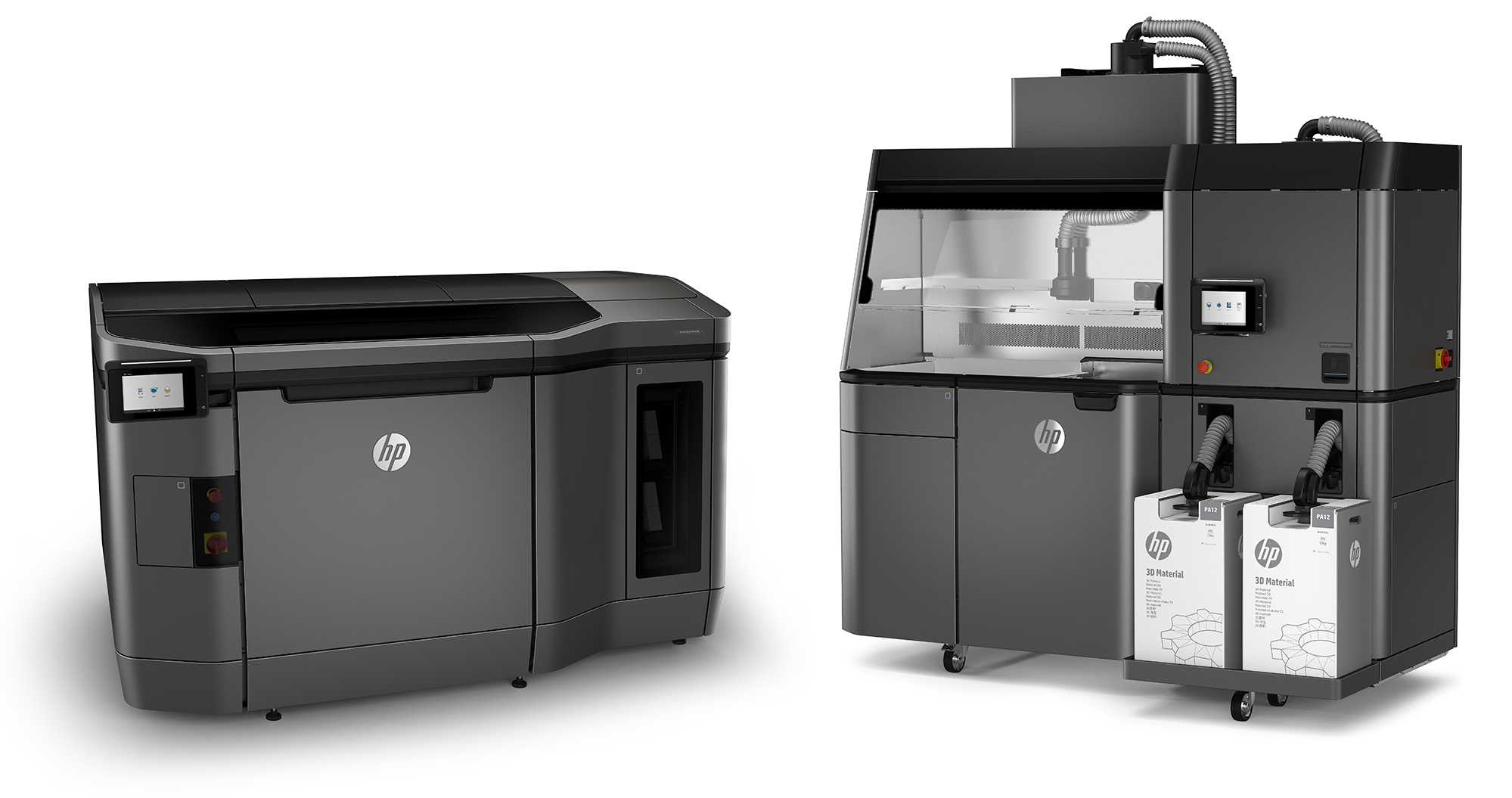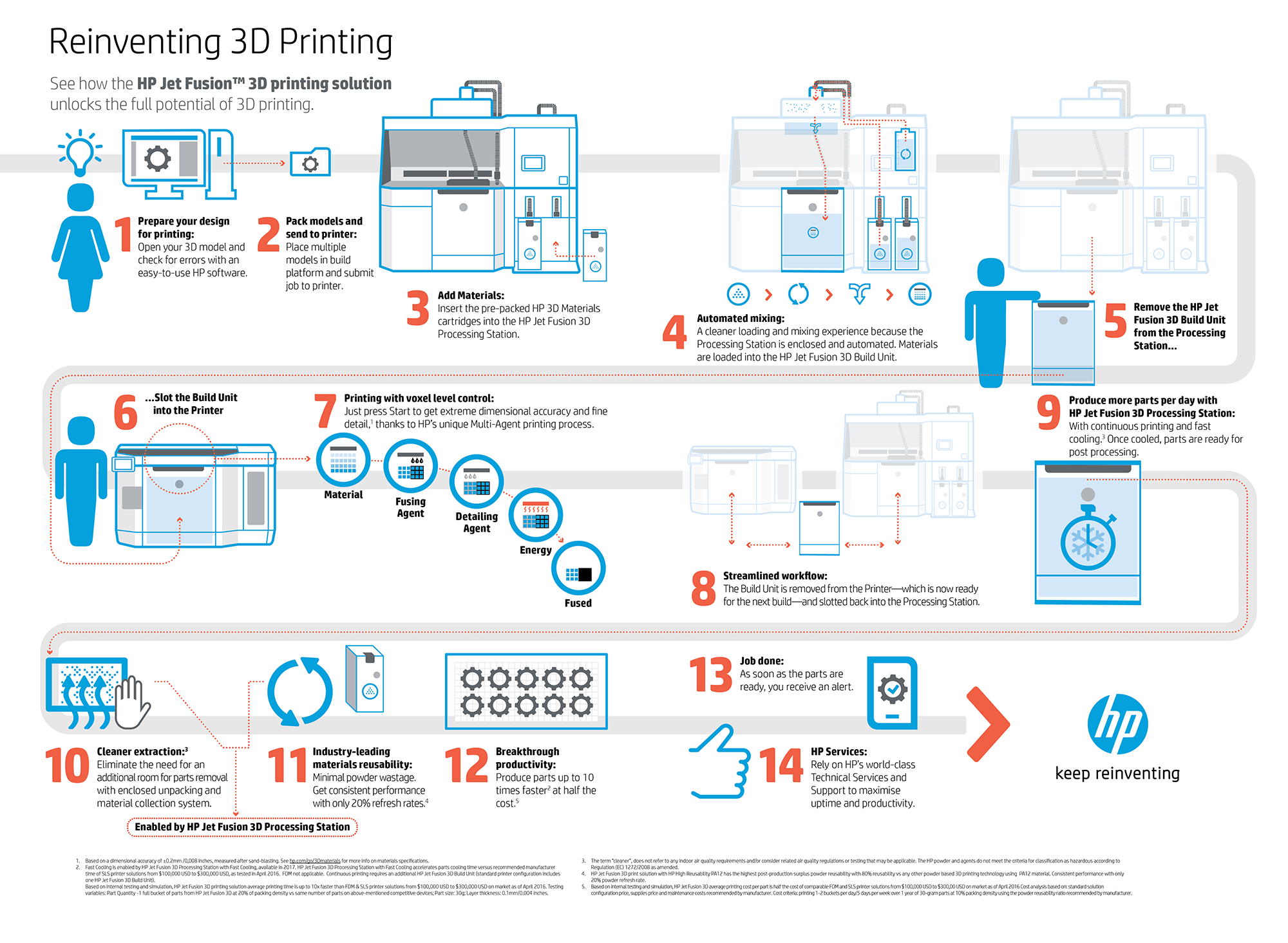
HP revealed more details about their first in-house developed 3D printing products, the HP Jet Fusion 3D 3200 and 4200 Printers.
We’ve known that HP has been working on a new, industrial-focused 3D printing technology for some time, most notably from a cryptic press conference a couple of years ago. At the time, it really wasn’t clear at all how this machine worked or what its capabilities might be. Now we know a lot more.
HP’s 3D printer is not just a piece of hardware; it’s actually a comprehensive system entailing hardware, software, operational processes and material, all focused around the goal of production and efficiency.
At its core, the HP fusion jet process is a powder-based technology in which loose fine powder is fused together, in a manner similar to existing powder machines. However, HP has supercharged the process by doing that fusion in different, more efficient ways.
The Fusion process enables some advantages, according to HP. They say they can control the material properties of individual voxels, the smallest 3D resolvable unit within a print – and at a staggering “340 million voxels per second”. This is a capability no other 3D printer has; material switches are a problematic issue and typically have poorer resolution on other machines. The printing process is said to be “up to 10X” faster than comparable machines, but more on that later.
Here we can see an overview of the printing process on the Fusion system, where it’s apparent they have a very different approach. The “system” is actually two stations (as shown at top). One is the printer, the other being a processing station.

Evidently the processing station prepares a “build unit”, which appears to be a kind of “mobile build volume”. Once it’s loaded with materials, it is transferred to the actual printer, where the printing takes place. Finally, the build unit returns to the processing station for finishing, which I presume includes a heat process to fuse the print.
This two-stage process enables much faster printing. Some other powder-based 3D printers will “stop” printing during heat phase, which can literally drop the effective print completion rate by half or more. HP’s process avoids this by enabling the two machines to operate in parallel.
Now for cost and availability. HP announced two different models, the 3200 and 4200.
The 3200 is designed for prototyping, and will cost USD$130,000 plus another USD$25,000 for the required Processing Station when it’s available in 2017.
The 4200, designed for prototyping and short-run production, will be available earlier in “late 2016” and will cost, well, they don’t actually say. But there is no doubt it will cost more than the 3200’s USD$155,000.
There is also no word on the price of the materials, which one could expect to carry premium levels.
But is this machine going to succeed? I have many questions, but I’ll save them for another post.
Via HP

